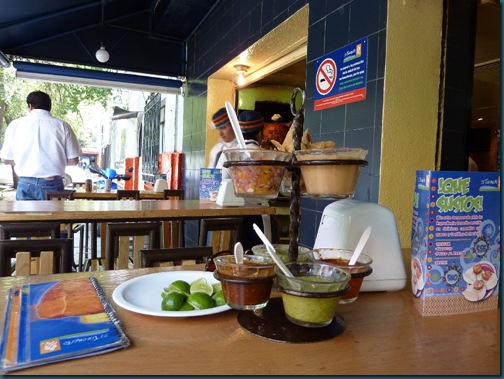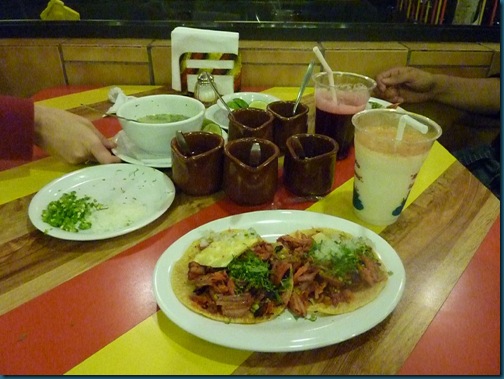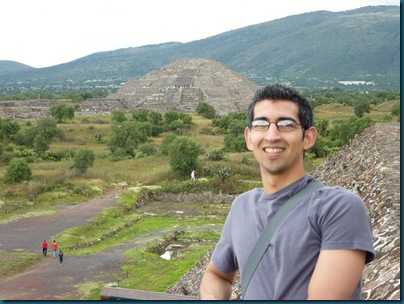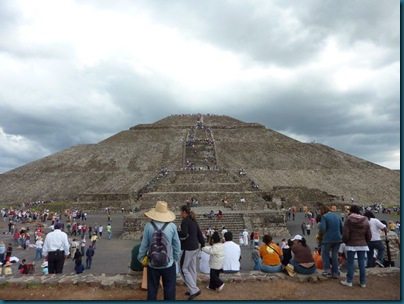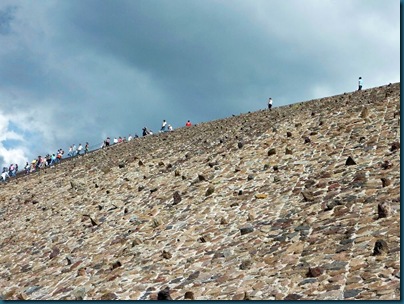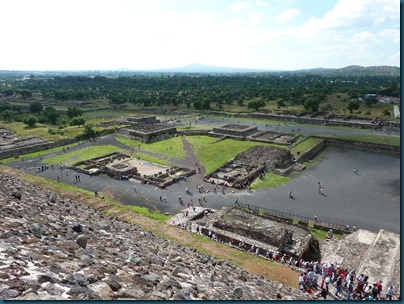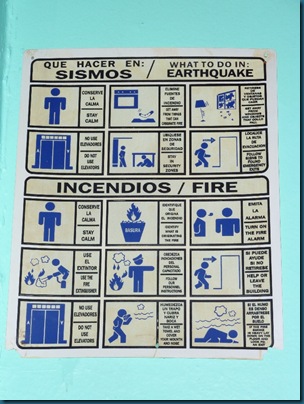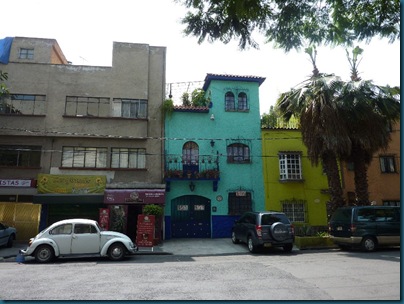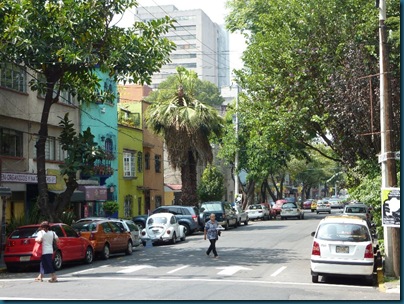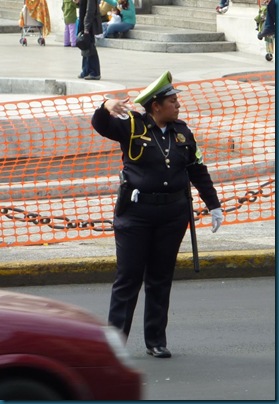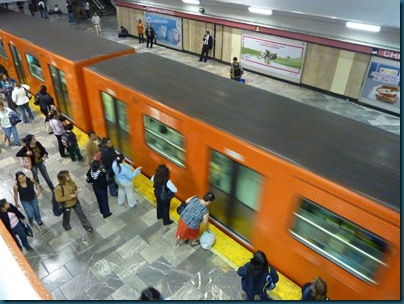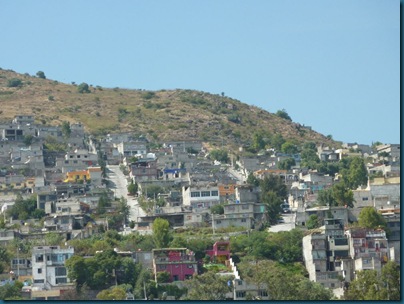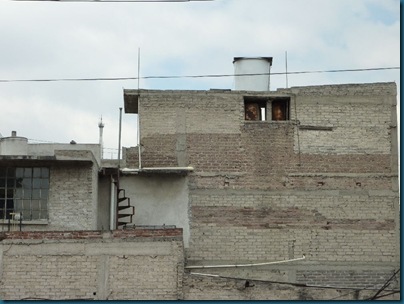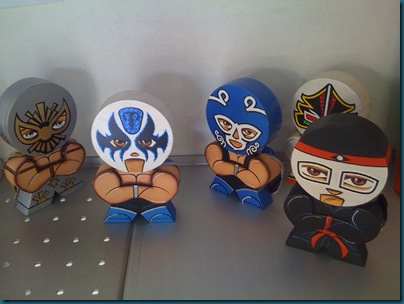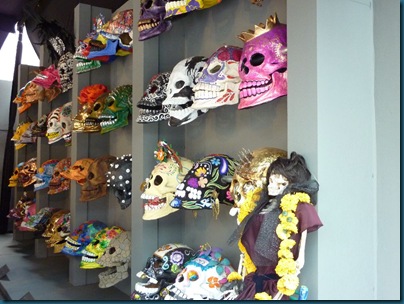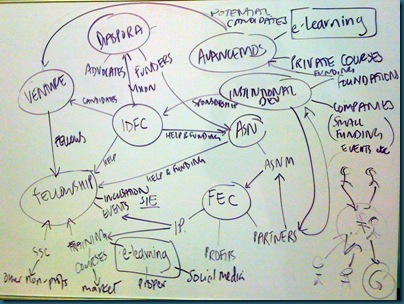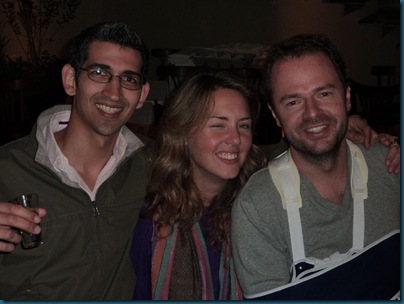It's been three weeks since I arrived in Mexico City, and my journey towards understanding social enterprise in Latin America has been slightly side-tracked by the work I've been doing with Ashoka. Instead of focusing on what are called 'first storey' social organisations (i.e. ones that are working directly with social programmes), I've devoted most of my time towards helping design new structures for reducing Ashoka's dependency on fund-raising. It has proved a fascinating insight into a global organisation that is more innovative and forward thinking in its local branches than it is at the centre.
Discussing sustainability at Ashoka

The biggest challenge that both Ashoka and social entrepreneurs face right now in Mexico is that funding has dried up with the recession, which has hit Mexico really badly. Since there appears to be no obvious Government funding for social or non-profit enterprises, as far as I can see there appear to basically be three financing mechanisms
- Microfinance
- Hybrid Value Chains (Inclusive Business Models)
- Sponsorship from large corporates
Microfinance is a specialised business model, and although there are a number of well established players like Fin Comun and Pro Mujer, this not something that most social enterprises can employ as a self-financing mechanism. Since the financing is also aimed at micro-enterprises, it is also not a viable for raising funds for 'first storey' social enterprises.
The hybrid value chain model is also only relevant to the limited spaces where social enterprises are working with local or indigenous producers, or base of the pyramid demographics, and can connect these with commercial organisations looking to reduce production costs or to scale their markets; thus creating partnerships that result in financial and social benefit for both parties.
This leaves Sponsorship. Unfortunately, there's only a certain number of corporates large enough and interested enough to have run sponsorship programmes over the past few years. Probably only about 20 obvious ones... HSBC, AXA, Zurich Bank, Scotia Bank, Axtel, Kleenex, Kotex, Marti, Danone, Wal-Mart, Gamesa, Colgate, Novartis, Pfizer, Cemex, Bimbo, P&G, Cadbury, Kraft, Pepsi Co and Femsa - and only about 2 of these are actually Mexican companies. Alongside this there are a few Foundations that provide funding too, but again I suspect the number is small. The only one I keep hearing about is the Kellogg Foundation.
What I'm therefore finding is that social organisations, large and small, are all competing for funding from the same players. The small ones can't really compete with the bigger organisations, and the bigger organisations need more funding than is now available after the recession, so nobody wins.
Potential Solutions
I'm not sure what the solution is, but I'd imagine that if all these companies and foundations co-operated to create a single fund, and then split this to cater for larger umbrella organisations and small grassroots organisations separately, there'd be a better distribution of funding. Specifying focus areas would still allow companies to be associated with the projects that fit the image they want to project, and they'd all benefit from the economies of scale and removal of duplication of effort and cost. However this still wouldn't solve the major problem which is that there just isn't enough to go around.
Self-financing business models are the obvious answer here, but it isn't really that simple for many social organisations. For starters, many of the founders don't have business skills or experience, and more importantly they don't have the spare time or resource available to identify and set these models up. The standard solutions all focus on upskilling the people that run these organisations, but over the past few years I've begun to realise that while this is needed, it is not going to address the problem. The reason is that business model innovation in a social context is harder than simply starting with a business idea, and redesigning organisations to cope with these is more complicated than anything you could expect someone without experience to achieve.
As far as I can see, the only solution is for umbrella organisations that support social enterprise, to set-up Shared Service (Resource) Centres that add the skill and resource capacity that small organisations need in order to be able to innovate and grow. I've helped set these up for Local Government when I was working as a Consultant in the UK, and don't believe this would be difficult to set up for the social sector. I wrote a bit about them in my article on partnerships for the social sector (
http://bit.ly/4BSu9y) and put up some scribbles from a workshop with UnLtd on designing Shared Resource Centres in a presentation here:
A couple of organisations in Mexico are also starting to provide this capacity as consultancies. One is
New Ventures and the other is
Sustentavia. Sustentavia are newer, but have a much better operating model that recognises that you can't really expect cash strapped social organisations to pay for services up front when they don't have the money, and hence aim for long term partnerships and investment in success instead.
There is also a small presence of social investment in the form of IGNIA Fund, an investment firm based in Monterrey, Mexico, dedicated to investing in commercial enterprises serving low-income populations, but I'm not sure what the scale of their investments is.
As mentioned earlier, right now I'm working with Ashoka Mexico to see if we can make them financially sustainable as a 'second storey' entity, which would at least remove them from the competitive mix and thus help stabilise the organisations they're currently supporting. I'll try and share what works once we get a bit further. Watch this space!







